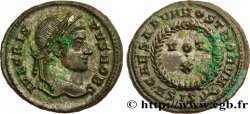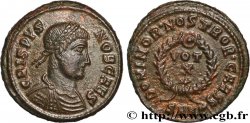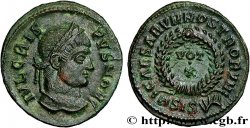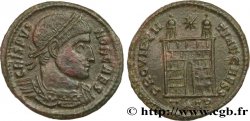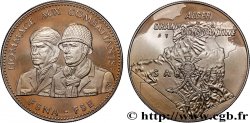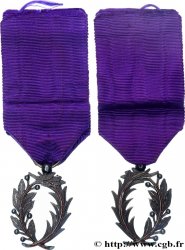v27_0419 - CRISPO Centenionalis ou nummus
MONNAIES 27 (2006)
Prezzo di inizio : 500.00 €
Valutazione : 750.00 €
Prezzo realizzato : 500.00 €
Prezzo di inizio : 500.00 €
Valutazione : 750.00 €
Prezzo realizzato : 500.00 €
Tipo : Centenionalis ou nummus
Data: 321
Nome della officina / città: Lyon
Metallo : rame
Diametro : 20 mm
Asse di coniazione : 6 h.
Peso : 3,22 g.
Grado di rarità : R3
Emission: 7e
Commenti sullo stato di conservazione:
Exemplaire de qualité exceptionnelle pour ce type de monnayage, flan large et complet des deux côtés, légèrement éclaté à 9 heures au droit. Portrait magnifique. Revers de style fin avec une petite faiblesse de frappe sur les légendes. Magnifique patine gris vert avec des reflets métalliques
N° nelle opere di riferimento :
Pedigree :
Cet exemplaire provient de la collection Daniel Compas, MONNAIES XXVII, n° 419
Diritto
Titolatura diritto : CRISPVS - N C. COS. II..
Descrittivo diritto : Buste lauré consulaire de Cripus à gauche, vu de trois quarts en avant, tenant le scipio (H*2).
Traduzione diritto : “Crispus Nobilissimus Cæsar Consul iterum”, (Crispus très noble césar consul pour la deuxième fois).
Rovescio
Titolatura rovescio : BEATA TRANQVILLITAS/ V.O/ TIS/ XX/ C|R// PLG.
Descrittivo rovescio : Autel sur la face antérieure duquel on lit VO/ TIS/ XX en trois lignes ; sur l’autel, un globe divisé en quatre parties ; au-dessus, trois étoiles.
Traduzione rovescio : “Beata Tranquillitas/ Votis vicennalibus”, (L’heureuse Tranquillité/ Vœux pour le vingtième année de règne).
Commento
Avec des traces d’argenture superficielle (2%). Rubans convergents : rubans descendant verticalement le long de la nuque (type 3). Manteau consulaire, “toga picta” et “toga palmata” richement décorées. Au revers, les lettres dans le champ C|R pourraient être les initiales de “Claritas Reipublicæ” pour l’éclat de la République. Même coin de droit que l’exemplaire du Münzkabinett du Staatliche Museen de Berlin, Bastien n° 88a, pl. VI. C’est le troisième exemplaire publié avec ce type de césure. Prendra le numéro 88d dans le Supplément III du Bastien.
With traces of superficial silvering (2%). Converging ribbons: ribbons descending vertically along the nape of the neck (type 3). Consular mantle, “toga picta” and “toga palmata” richly decorated. On the reverse, the letters in the C|R field could be the initials of “Claritas Reipublicæ” for the brilliance of the Republic. Same obverse die as the example in the Münzkabinett of the Staatliche Museen in Berlin, Bastien no. 88a, pl. VI. This is the third example published with this type of caesura. Will take the number 88d in Supplement III of Bastien
With traces of superficial silvering (2%). Converging ribbons: ribbons descending vertically along the nape of the neck (type 3). Consular mantle, “toga picta” and “toga palmata” richly decorated. On the reverse, the letters in the C|R field could be the initials of “Claritas Reipublicæ” for the brilliance of the Republic. Same obverse die as the example in the Münzkabinett of the Staatliche Museen in Berlin, Bastien no. 88a, pl. VI. This is the third example published with this type of caesura. Will take the number 88d in Supplement III of Bastien







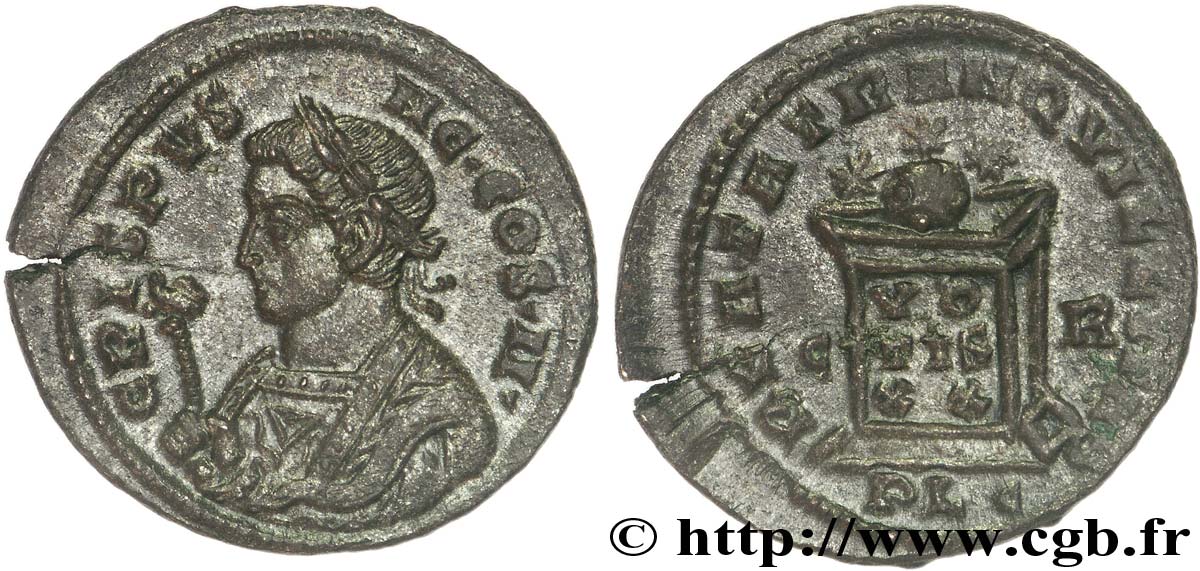
 Segnalare un errore
Segnalare un errore Stampate la pagina
Stampate la pagina Condividi mia selezione
Condividi mia selezione Fai una domanda
Fai una domanda Consegnare / vendere
Consegnare / vendere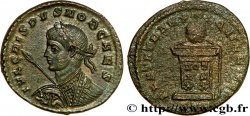
 Descrittivo
Descrittivo